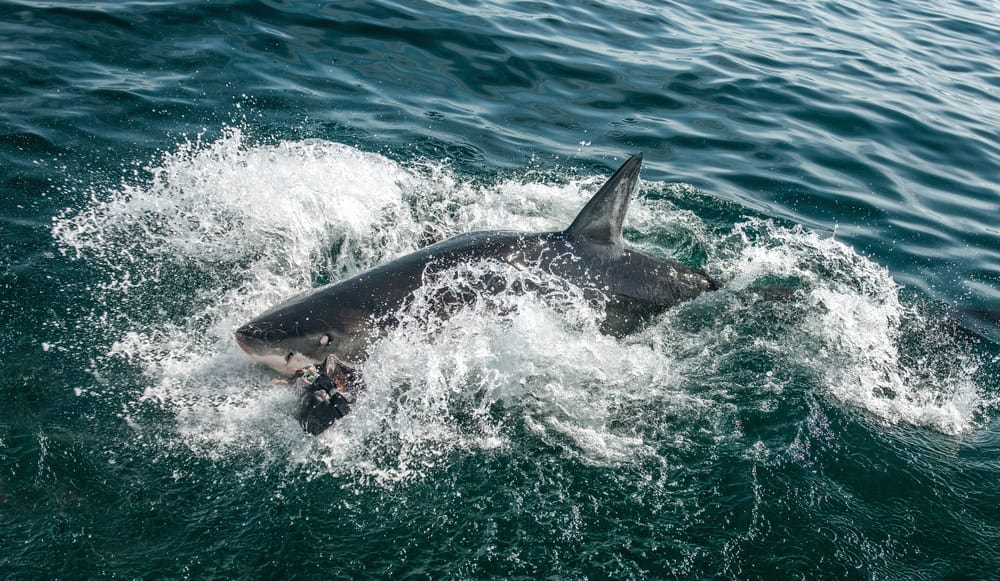Home to a myriad of fascinating sea life, the Atlantic Ocean has always been a source of mystery and intrigue. Among its many inhabitants, the great white shark stands as a symbol of both fear and admiration. These majestic creatures have long captured human imagination, but none more so than the largest great white shark ever seen in this vast oceanic expanse. Join us as we dive into the depths of the Atlantic to explore this intriguing titan of the sea.
What We Know About Great White Sharks

Great white sharks, scientifically known as Carcharodon carcharias, are among the most studied and revered of the ocean’s predators. They are known for their potent senses, sheer power, and aggressive predatory tactics. While they can be found in oceans worldwide, the ones inhabiting the Atlantic are particularly noteworthy due to both their size and the recent discovery of their largest known specimen.
The Magnitude of the Atlantic’s Largest Great White

The grand spectacle of the Atlantic’s largest great white shark is truly awe-inspiring. Stretching over 20 feet in length and weighing over 5,000 pounds, this apex predator dwarfs its oceanic peers. Its size alone presents a fascinating case for marine biologists and shark enthusiasts alike, overshadowing the typical 11-13 feet and 1,500-2,400 pounds found in most adult specimens.
Tracking and Studying The Giant

Understanding and tracking the largest great white shark in the Atlantic involves sophisticated technology and expertise. Researchers employ satellite tagging to monitor her movements, gaining insights into migration patterns and behavioral tendencies. This data helps us to appreciate these elusive creatures’ roles within the ocean’s ecosystem and how we might protect them in a changing world.
The Life Cycle of a Great White Shark

The life of a great white shark, from a newborn pup to a formidable ocean predator, spans several decades. Typically, female great whites mature at around 33 years, while males reach maturity earlier. This extended maturation period makes the conservation of these giants vital, as it directly impacts their population and survival rates in the wild.
Diet and Feeding Rituals

The diet of a great white shark includes a variety of marine animals. Seals, sea lions, and small dolphins are prime targets, though they may also feed on large fish and carrion. Employing a sneak-attack strategy, great whites use their excellent sense of smell and acute hearing to track their prey. The largest among them displays these predatory behaviors with heightened efficiency, ensuring its place at the top of the food chain.
Habitat Preferences

Great white sharks prefer temperate coastal waters, often staying in the upper 650 feet of the ocean where light is plentiful. Occasionally, they can be found venturing into deeper waters. The largest great white is believed to have a wide territorial range which includes hunting grounds along the North Atlantic, providing exciting opportunities for marine observation and study.
Interacting with Human Activity

Despite their reputation, great whites pose little threat to humans. Encounters are rare, with most resulting in non-fatal outcomes. The presence of the largest great white shark in the Atlantic has sparked discussions about the delicate balance between marine conservation and tourism. Protecting these magnificent creatures ensures that future generations can continue to marvel at their grandeur.
The Importance of Conservation

Marine conservation efforts are critical to the survival of great white sharks, including the Atlantic’s largest specimen. Overfishing, climate change, and habitat destruction pose significant threats to their existence. By raising awareness and promoting positive interactions between humans and marine life, we can ensure these ocean giants continue to roam the seas for years to come.
Technological Advances in Shark Research

The advent of new technologies, like drone surveillance and underwater imaging, has revolutionized shark research. These tools have painted a clearer picture of the largest great white’s behavioral patterns, migration habits, and survival strategies. Such insights contribute to our broader understanding of marine biodiversity and the health of ocean ecosystems.
Public Fascination and Media Influence

Reports and documentaries about the largest great white shark have captivated the public’s imagination, propelling these creatures into pop culture prominence. While not always painted in the most positive light, these features encourage a dialogue about conservation and respect for the marine world.
Myths and Misconceptions

Great white sharks, including the largest in the Atlantic, are often misunderstood due to myths and exaggerated tales. They are not mindless eating machines but rather intricate creatures playing crucial roles in marine ecosystems. Dissecting these misconceptions helps to promote a more informed and empathetic view of these captivating animals.
A Future with the Atlantic’s Giants

As we look to the future, the protection and study of the Atlantic’s largest great white shark offer promising opportunities for marine science and conservation. Their iconic status and mysterious nature inspire awe and respect. Through continued research, advocacy, and awareness, we can foster a deeper connection with these magnificent sea titans and the oceans they inhabit.
Conclusion

The largest great white shark ever seen in the Atlantic Ocean serves as a compelling ambassador for marine life worldwide. As our understanding of these creatures deepens, so does our responsibility to ensure their survival. By appreciating their place in the natural world, we forge a path towards coexistence that celebrates the majesty of the Earth’s oceans and their awe-inspiring inhabitants.
- The Sacred Cow: How India’s Reverence Challenges Global Norms - June 18, 2025
- Where to Watch Humpback Whales Breach During Migration - June 18, 2025
- What Kind of Bird Is Zazu? The Real Story Behind the Character - June 18, 2025

